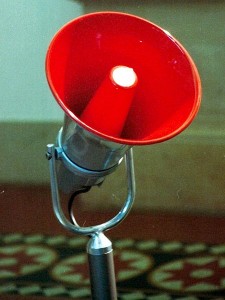Now that we’ve covered envelope design, we can move on to the meat your letter campaign – the letter itself!
Think about it, your letter had to go through a lot of obstacles to get in the hands of your prospect. They had to notice your piece (most likely laying in a pile of other offers), be enticed by the envelope design and copy, and go through the trouble of opening it. Now they actually have to READ the content. This is it… you better not blow this golden opportunity!
Now let’s go over several useful tips for creating a great letter:
In a world where people are constantly bombarded by audio and video messaging, the quaint letter may seem a thing of the past. Not so! The key is play off people’s lack of attention span and make your offer as short and sweet as possible. Your copy should never go over one page, especially when talking to other businesses and customers you know don’t have a lot of time on their hands. Can’t fit everything on a sole piece of paper? Insert an additional coupon, news article, or order form instead to give more information.
img: wikimages, Steve Snodgrass
The worst mistake you can make in your letter campaign is burying your offer or promotion within the body of the text. The chances of someone reading every word you’ve written is low; research has shown people tend to focus on the first few lines and any additional text that stands out. Remember, this is direct response. Bold it, change the color, change the font … do something, anything to make that offer jump off the page!
img: wikimages, Shaun Greiner

Customers Love a P.S.
Years of direct marketing research has proven that people target in on Post Scripts, which typically appear before the main body of the letter. This is also something that benefits from a different color or font to draw attention to it. The best P.S. notes I’ve seen are not the ones formatted with the letter; they’re off-center, written in the margins, or even at the top of the page, and typically use a scripted font to give the illusion that the sender had to write a special note before the letter mailed out.
Believe it or not, ‘Johnson Box’ is a serious marketing term. Named after legendary direct marketer Frank Johnson, the ‘Johnson Box’ is a box of text that highlights the key message of the letter. A Johnson Box directs the reader’s attention to this key message first, enticing them to read the rest of the letter. These are highly effective when trying to get your message across quickly, but limit your letter to only 1 or 2. More is not always better.
Match diction to your audience 
The rule-of-thumb has always been: when writing for the public, write so an eight-year-old would understand. A lot of direct marketers have adopted this rule. But, when it comes to targeted mailings, you should write for your audience, most of whom are probably older than eight, right? Think about it, there’s no need use an elementary vocabulary when mailing to a group of physicians, PhD candidates, or astrophysicists! When you speak their language, your audience will know that YOU know what you’re talking about, and you’ll become a legitimate resource or service to their field.
img: wikimages
As important as diction is tone. Make sure to create a mood that pairs well with your Call-to-Action. Trying to raise money for domestic abuse or animal rights? A serious, pleading tone will cause your reader to feel empathetic to your cause. Trying to draw people down to your new beach resort? A fun, conversational tone will let your reader know that your hotel is the place to be this summer! The tone of your piece could be the determining factor in whether customers take your offer seriously…or not.
img: wikimages
Allow someone else’s voice tell the story for you! Not only does it give a real face to your product or service, but it assures potential customers that it is something worth buying into. If you have the means, getting a celebrity or highly respected member of the field you’re trying to target to endorse your product can result in a serious jump in response.
img: wikimages
The reader knows your offer, but what’s the rush to respond to it? Create a hard deadline (which you can extend in follow-up campaigns) for people to respond to create a sense of urgency. The same thing can be achieved when giving out promotional items or incentives by saying it’s a limited time only or only for the first 1,000 responders.
Of course it sounds obvious, but overlooking this one pretty much guarantees failure. Always give a way for people to respond to you! Make sure to include a phone number, email address, or better yet a PURL/GURL. If you want potential prospects to respond via snail mail, make sure to include a BRE (Business Reply Envelope) or BRC (Business Reply Card) with postage included. Many direct marketers also include a source (key) code or coupon number for customers to submit when responding or purchasing to better track response rates of different mailings.
Is there a better way to target an individual than by calling them by name? With PURL technology from Easypurl, you can create a PURL for each prospect to include in the letter’s greeting, P.S., or Johnson Box, or to use alongside different variable images and text to target their individual interests, and refer to their purchase history. It’s the easiest way to customize a letter to each and every one of the people in your list.
Follow these tips, and you’re sure to have an effective letter campaign! Has your business created a stellar letter campaign? Let us know about it in the comments!
Easypurl.com Insider











